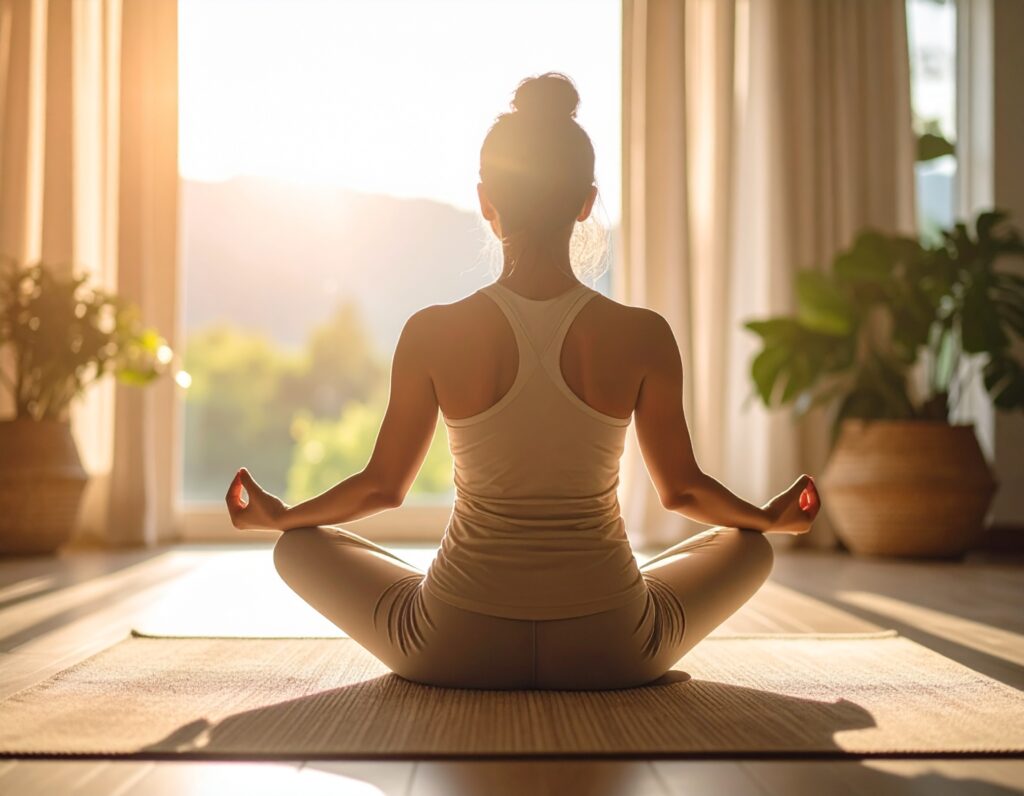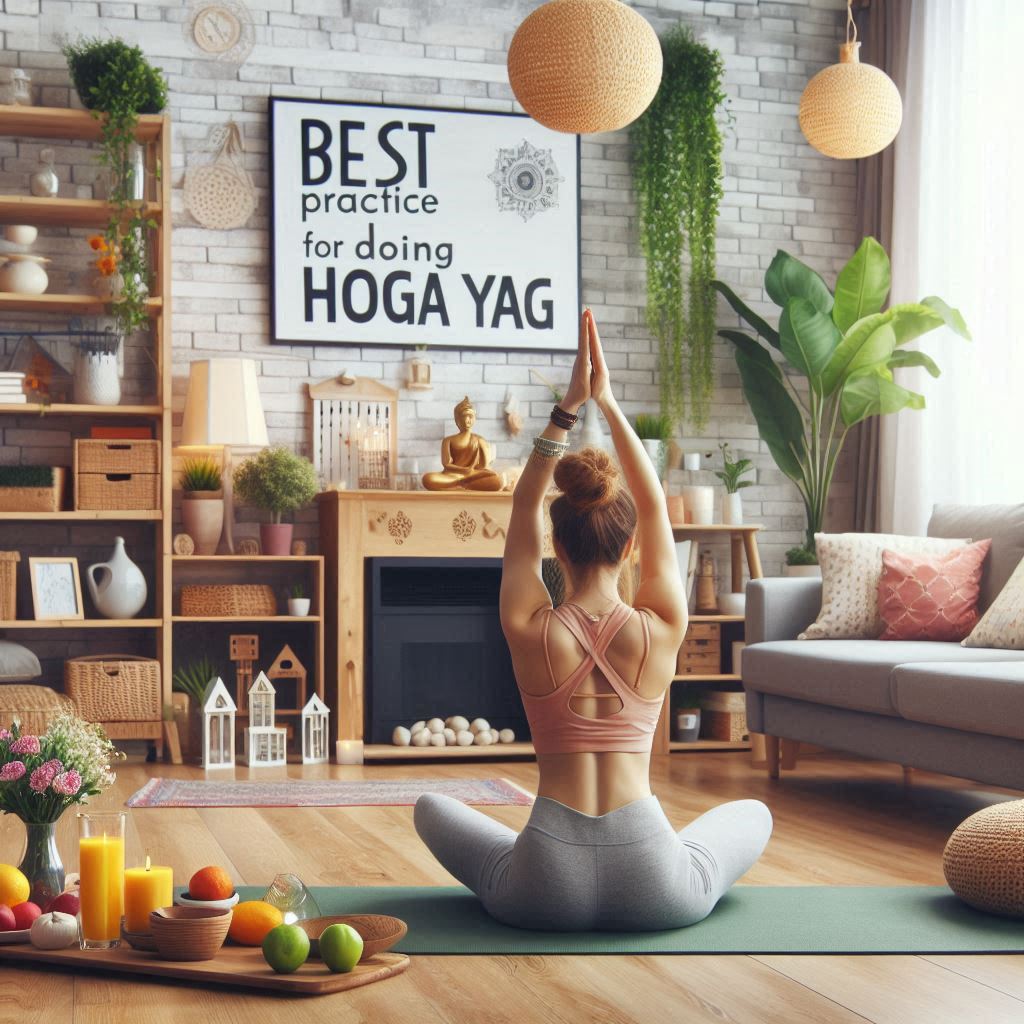Key Takeaways
The best practice for doing yoga involves a combination of a consistent mindset, choosing the right style for your goals, prioritizing breath and proper alignment over deep poses, and listening to your body to ensure safety and long-term growth.
Introduction
Whether you’re completely new to yoga or looking to deepen your existing practice, you’ve likely wondered: “What are the best practices for doing yoga?” It’s a question that touches the heart of every practitioner’s journey, and honestly, it can feel overwhelming with so much conflicting advice out there.
Maybe you’ve felt intimidated walking into your first class, unsure if you’re “doing it right.” Or perhaps you’ve been practicing for a while but feel stuck, wondering if there’s a better way to approach your time on the mat. These feelings are completely normal—and they’re exactly why this comprehensive guide exists.
This isn’t just another list of yoga tips. Instead, you’ll discover a complete framework for building a safe, effective, and deeply rewarding yoga practice. From cultivating the right mindset to mastering fundamental techniques, we’ll cover everything you need to transform your relationship with yoga, whether you’re practicing at home or in a studio.
Section 1: The Foundation – Cultivating a Yogic Mindset
Before we dive into poses and sequences, let’s address something crucial that many yoga guides skip: your mindset shapes everything about your practice. The best practice for doing yoga begins not with your body, but with your mind.
Practice with Intention (Satya)
Every time you step onto your mat, ask yourself: “Why am I here today?” Your intention might be:
- Stress relief after a challenging day
- Building strength and flexibility
- Finding mental clarity and focus
- Connecting with your breath and inner peace
This isn’t just philosophical fluff—having a clear intention transforms random movements into purposeful practice. Research shows that intention-setting activates specific neural pathways that enhance both physical performance and mental well-being.
Embrace Non-Judgment (Ahimsa)
Here’s a truth bomb: Your body is different every day. Some days you’ll feel flexible and strong; others, you might feel tight and tired. Both are perfectly normal.
The principle of ahimsa (non-harm) teaches us to treat ourselves with the same kindness we’d show a dear friend. This means:
- Accepting where you are today without criticism
- Modifying poses when needed without feeling “less than”
- Celebrating small improvements rather than comparing yourself to others
Value Consistency Over Intensity (Tapas)
Want to know a secret? A 15-minute daily practice will transform your life more than one grueling 90-minute session per week. This principle, called tapas (disciplined practice), is one of the most powerful yoga tips for beginners and experienced practitioners alike.
Consistency builds:
- Muscle memory that makes poses feel more natural
- Mental resilience through regular mindfulness practice
- Physical adaptations that happen gradually and safely
- Habit formation that makes yoga a natural part of your routine
Be a Witness to Your Practice (Svadhyaya)
Svadhyaya means self-study—becoming a curious observer of your own experience. Instead of judging your practice, try noticing:
- How different poses affect your mood
- Which side of your body feels tighter or stronger
- How your breath changes throughout your practice
- What thoughts arise during challenging poses
This awareness becomes your greatest teacher, guiding you toward what your body truly needs.
Section 2: Finding Your Path – Which Yoga Style is Best for You?
Not all yoga is created equal, and finding the right style for your goals is crucial. Here’s your decision-making guide:
| Your Goal | Best Yoga Style | What to Expect |
|---|---|---|
| Get a workout | Vinyasa or Power Yoga | Fast-paced, strength-building sequences that make you sweat |
| Relax and stretch | Yin or Restorative Yoga | Long-held poses with props, deeply meditative and calming |
| Perfect your alignment | Hatha or Iyengar Yoga | Precise instruction, longer holds, focus on proper form |
| Build heat and detox | Bikram or Hot Yoga | Traditional sequences in heated rooms for deep cleansing |
| Spiritual practice | Kundalini Yoga | Combines movement, breath work, and meditation |
Pro Tip: Don’t feel locked into one style forever. Many practitioners find that different styles serve them at different life stages or even different days of the week.
Section 3: The Physical Practice – 7 Core Principles for Safety & Alignment
Now for the practical magic—the physical principles that will keep you safe and help you progress steadily.
1. Lead with Your Breath (Pranayama)
Your breath is the engine of your practice. Before you move, establish your ujjayi breath:
- Inhale and exhale through your nose
- Create a soft “ocean” sound in the back of your throat
- Keep your breath steady and controlled throughout each pose
When your breath becomes forced or shallow, it’s time to ease up or rest in child’s pose.
2. Alignment Over Depth
This is the #1 rule for safety: Better alignment in a shallow pose trumps deep flexibility with poor form every time.
Good alignment protects your joints and builds strength effectively. For example, in Downward Dog:
- ✅ Good: Hands shoulder-width apart, fingers spread, slight bend in knees if needed
- ❌ Poor: Hands close together, shoulders hunched, forcing straight legs
3. Warm-Up and Cool-Down Are Non-Negotiable
Your body needs preparation and integration time. Here’s a simple framework:
3-Minute Warm-Up:
- Cat-Cow poses (5 rounds)
- Gentle neck rolls
- Arm circles and shoulder shrugs
3-Minute Cool-Down:
- Seated forward fold
- Gentle spinal twist (both sides)
- Final relaxation (Savasana)
4. Engage Your Core (Bandhas)
Think of core engagement as “gently hugging your muscles to your bones.” This isn’t about rigid tension—it’s about creating a supportive foundation from your center.
Simple technique: Before entering any pose, take a breath and gently draw your navel toward your spine about 30%. This subtle engagement protects your lower back and improves stability.
5. Listen to Your Body (Don’t Push Through Pain)
Learn to distinguish between:
- Discomfort: The sensation of muscles stretching or working (this is okay)
- Pain: Sharp, shooting, or joint-related sensations (back off immediately)
Remember: Yoga should challenge you, not injure you. When in doubt, err on the side of caution.
6. Use Props as Tools, Not Crutches
Props aren’t for “beginners only”—they’re intelligent tools that help you access poses safely:
- Blocks bring the floor closer to you
- Straps extend your reach safely
- Bolsters support deep relaxation
- Blankets maintain warmth and comfort
7. Master the Foundation: Feet and Hands
Your foundation determines everything above it. Whether standing or in arm balances:
- Feet: Ground through all four corners (big toe, little toe, and both sides of the heel)
- Hands: Spread fingers wide, press through fingertips and palms evenly
Section 4: Putting It All Together – Sample Sequences for Your Goals
Theory is great, but let’s get practical. Here are two sequences you can use immediately for how to practice yoga at home:
The 15-Minute Morning Energizer Sequence
Perfect for: Building energy and focus for your day
- Cat-Cow Poses (1 minute) – Warm the spine
- Sun Salutation A (3 rounds, 6 minutes total)
- Mountain Pose → Upward Salute → Forward Fold → Half Lift → Low Push-up → Upward Dog → Downward Dog → Forward Fold → Mountain Pose
- Warrior II (1 minute each side) – Build strength and focus
- Triangle Pose (1 minute each side) – Open hips and hamstrings
- Tree Pose (1 minute each side) – Improve balance and concentration
- Seated Meditation (2 minutes) – Set intention for the day

The 20-Minute Evening Unwind Sequence
Perfect for: Releasing tension and preparing for rest
- Gentle Neck and Shoulder Rolls (2 minutes) – Release daily tension
- Seated Forward Fold (3 minutes) – Turn inward and quiet the mind
- Reclined Spinal Twist (2 minutes each side) – Wring out the spine
- Happy Baby Pose (2 minutes) – Open hips gently
- Legs-Up-The-Wall Pose (5 minutes) – Reverse blood flow and calm nervous system
- Final Relaxation (Savasana) (4 minutes) – Complete integration
Section 5: Common Mistakes to Avoid
Learning what NOT to do is just as important as learning proper technique. Here are the most frequent mistakes that can hinder your progress:
❌ Holding Your Breath Your breath should flow continuously. If you’re holding your breath, you’re working too hard.
❌ Comparing Your Practice to Others Social media yoga can be inspiring, but remember—you’re seeing someone else’s highlight reel, not their full journey.
❌ Skipping Savasana (Final Relaxation) This isn’t “optional”—it’s when your nervous system integrates all the work you’ve done.
❌ Pushing Flexibility Too Fast Flexibility develops over months and years, not days. Patience prevents injury and builds lasting change.
❌ Practicing on a Full Stomach Leave 2-3 hours after a large meal, or 1 hour after a light snack before practicing.
Frequently Asked Questions
How often should a beginner do yoga?
Start with 2-3 times per week for 20-30 minutes. This frequency allows your body to adapt while building consistency. As you develop strength and familiarity, you can gradually increase to daily practice if desired.
Is it okay to do yoga every day?
Yes, but vary the intensity. Daily yoga can be incredibly beneficial when you listen to your body. Mix gentle restorative practices with more vigorous sessions, and always include at least one complete rest day per week.
What should you not do before yoga?
Avoid:
- Large meals (wait 2-3 hours)
- Alcohol consumption (impairs balance and judgment)
- Intense cardio (you want to come to yoga centered, not exhausted)
- Applying lotions or oils (can make poses slippery and unsafe)
Can I teach myself yoga?
Absolutely! Many practitioners begin with online resources and develop beautiful practices. However, consider:
- Starting with beginner-friendly classes or videos
- Investing in occasional in-person instruction for alignment feedback
- Being extra conservative with challenging poses
- Prioritizing consistency over complexity
Conclusion
The best practice for doing yoga isn’t about perfect poses or advanced sequences—it’s about showing up consistently with intention, respect for your body, and openness to growth. Remember the four pillars we’ve explored:
- Mindset: Approach your practice with intention, non-judgment, and patience
- Style: Choose yoga types that align with your current goals and needs
- Alignment: Prioritize safety and proper form over depth or intensity
- Consistency: Regular practice trumps sporadic heroic efforts every time
Whether you’re rolling out your mat for the first time or the thousandth, each practice is an opportunity to connect more deeply with yourself. Start where you are, use what you have, and do what you can. Your yoga journey is uniquely yours—embrace it fully.
Ready to deepen your practice? Remember that yoga is a lifelong journey of discovery. Be patient with yourself, celebrate small victories, and trust that every moment on your mat is moving you toward greater strength, flexibility, and inner peace.
Namaste 🙏

